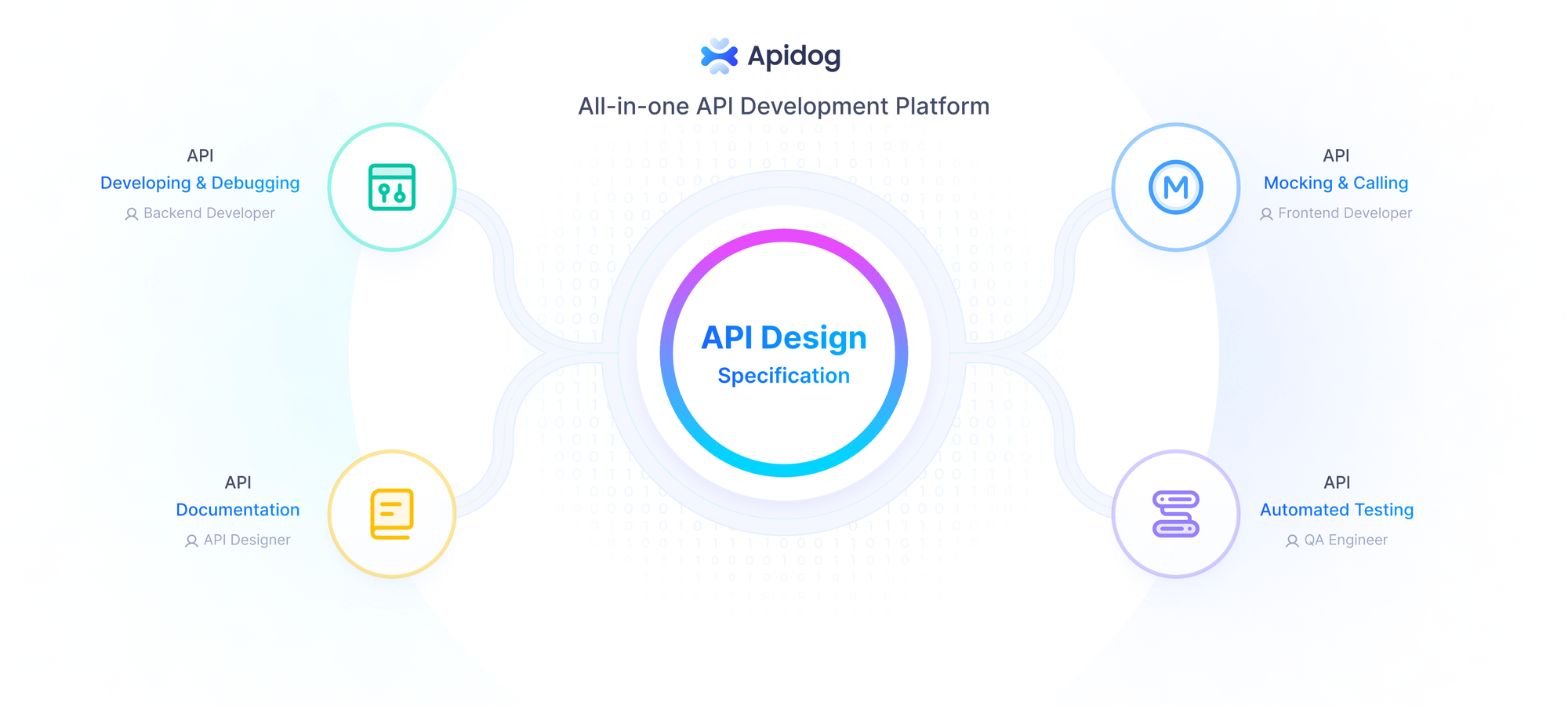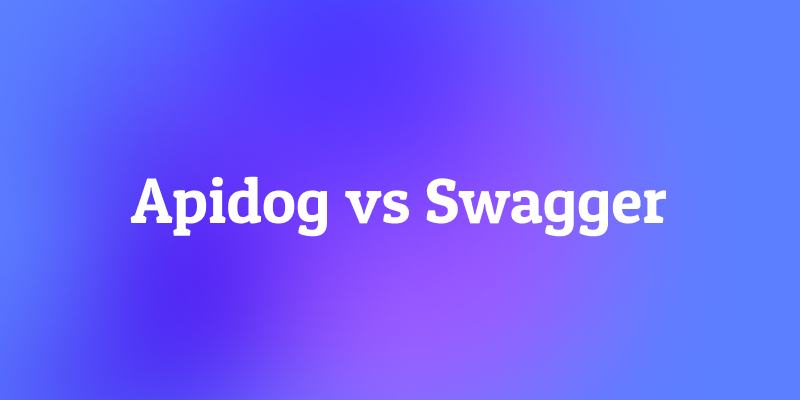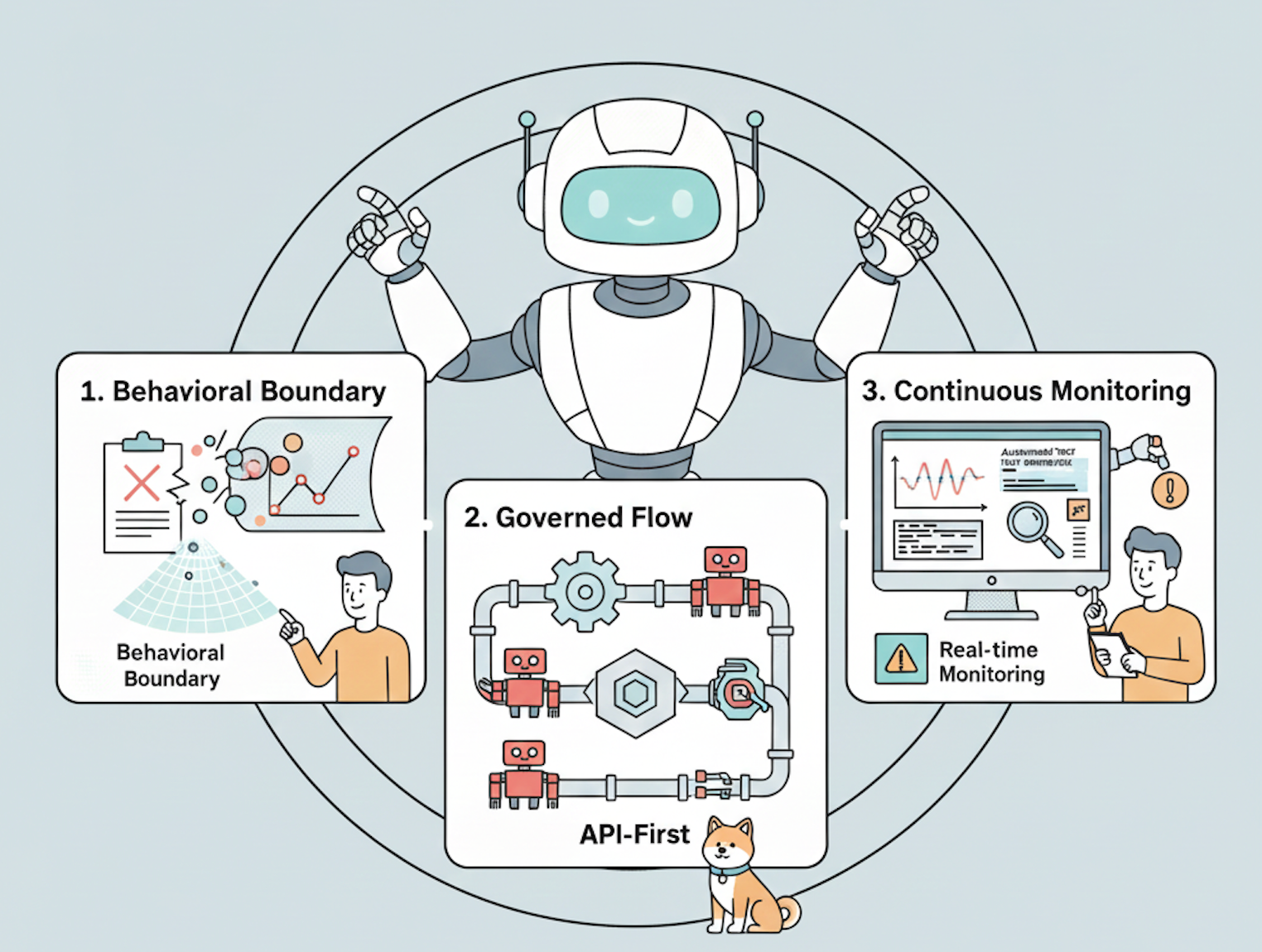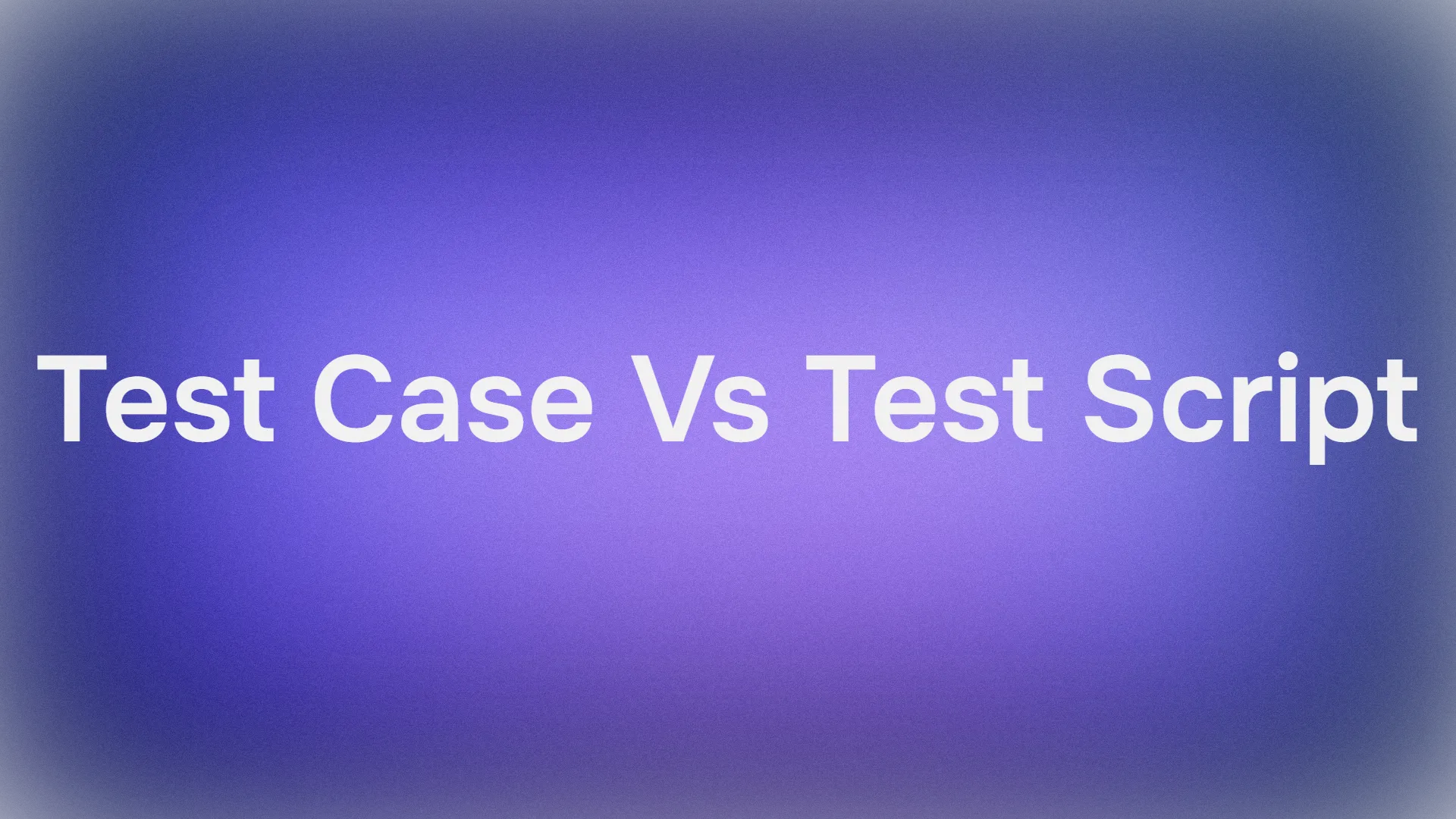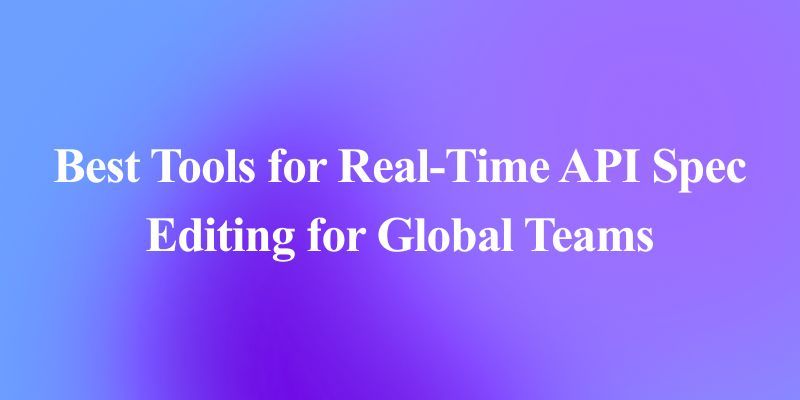So, you've decided to get serious about your API workflow. You're tired of scattered specs, broken endpoints, and the constant back-and-forth between your API documentation and your testing environment. You know you need a proper tool, and two names keep popping up: Swagger and Apidog.
If you've done any research, you've likely felt a bit of confusion. Is one better than the other? Are they the same thing? Do you need both?
Here's the short answer: Swagger is a pioneer, a suite of tools built around the OpenAPI Specification for designing and documenting APIs. Apidog is an ambitious, all-in-one platform that aims to handle the entire API lifecycle, including design, mocking, testing, debugging and documentation in a single, unified interface.
It's the difference between a trusted, specialized toolkit and a powerful, integrated workbench.
Today, we'll dive deep into Apidog vs Swagger, comparing them on usability, features, flexibility, collaboration, and developer experience. By the end, you'll have a clear sense of which tool is right for your team and projects.
Now, let's untangle the history, compare the features, and help you decide which tool (or combination!) is right for you and your team.
First, Untangling the Name: Swagger vs. OpenAPI
This is the most common point of confusion, so let's clear it up right away.
- OpenAPI Specification (OAS): This is the open standard itself. It's a language-agnostic, machine-readable format for describing RESTful APIs. Think of it as the blueprint language. It defines how you write down your API's paths, parameters, responses, and more in a YAML or JSON file. It was originally called the Swagger Specification but was renamed to OpenAPI in 2015 when it was moved to the Linux Foundation.
- Swagger: This is a suite of tools created by SmartBear Software that works with the OpenAPI Specification. Swagger provides the utilities to create, visualize, and work with these blueprints. The main tools are:
- Swagger Editor: A browser-based editor for writing OpenAPI definitions with real-time linting and preview.
- Swagger UI: A tool that takes an OpenAPI spec and generates beautiful, interactive API documentation.
- Swagger Codegen: A tool that generates server stubs and client SDKs from an OpenAPI spec.
So, when people say "We use Swagger," they usually mean they use the OpenAPI Specification to design their API and Swagger UI to display the documentation.
Apidog, on the other hand, is a product from a different company that fully supports the OpenAPI Specification but is not part of the Swagger tool suite. It's a competitor that offers a different approach.
The Core Difference: Philosophy and Workflow
The fundamental difference between these two ecosystems lies in their core philosophy.
Swagger: The Design-First Specialist
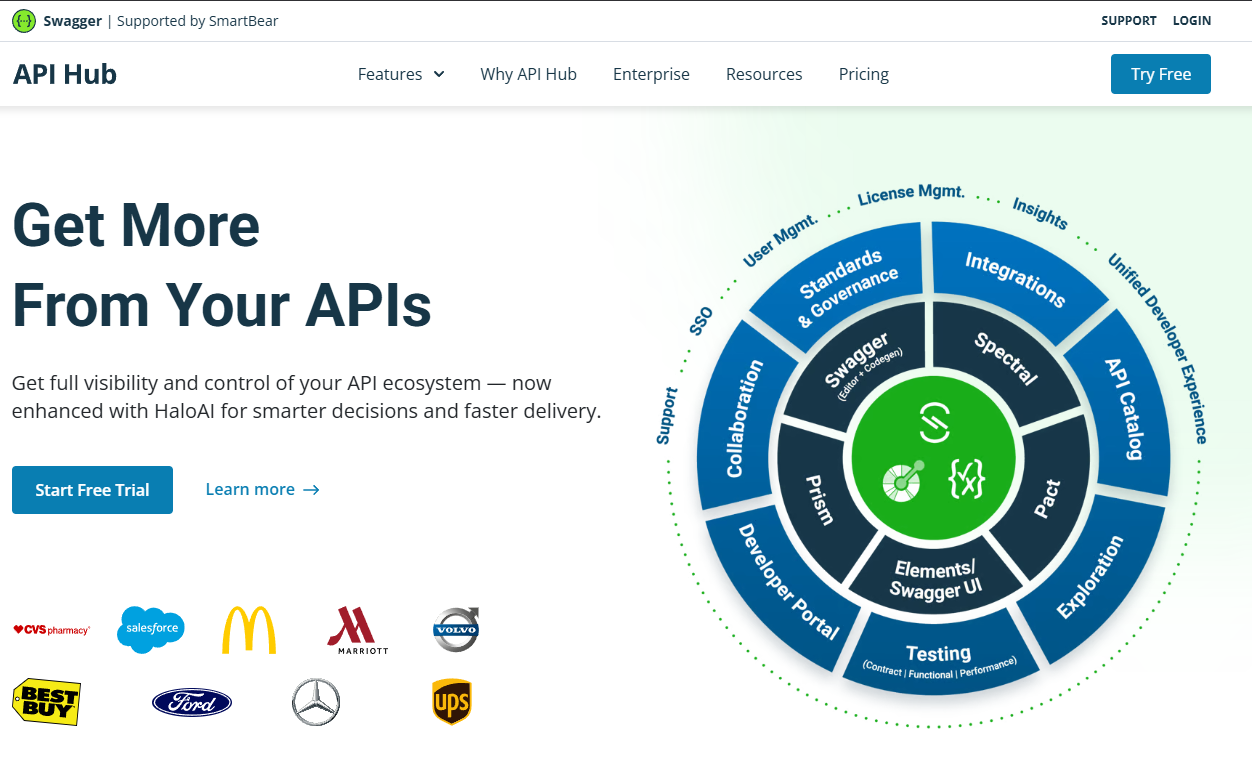
The Swagger workflow is traditionally design-first. You start by meticulously defining your API contract using the OpenAPI Specification in the Swagger Editor or another IDE. This spec file is your single source of truth.
- Step 1: Write your
openapi.yamlfile. - Step 2: Use Swagger UI to host the documentation for your consumers.
- Step 3: Use Swagger Codegen to create server boilerplate code.
- Step 4: Implement the server logic to match the spec.
- Step 5: Use other tools (like Postman or curl) to test the API.
Swagger includes tools like:
- Swagger Editor: for writing OAS definitions.
- Swagger UI: for generating interactive API documentation.
- Swagger Codegen: for generating client SDKs.
This approach is excellent for establishing a clear contract between frontend and backend teams early on. However, it often requires a constellation of different tools to complete the entire lifecycle.
Apidog: The All-in-One API Collaborator
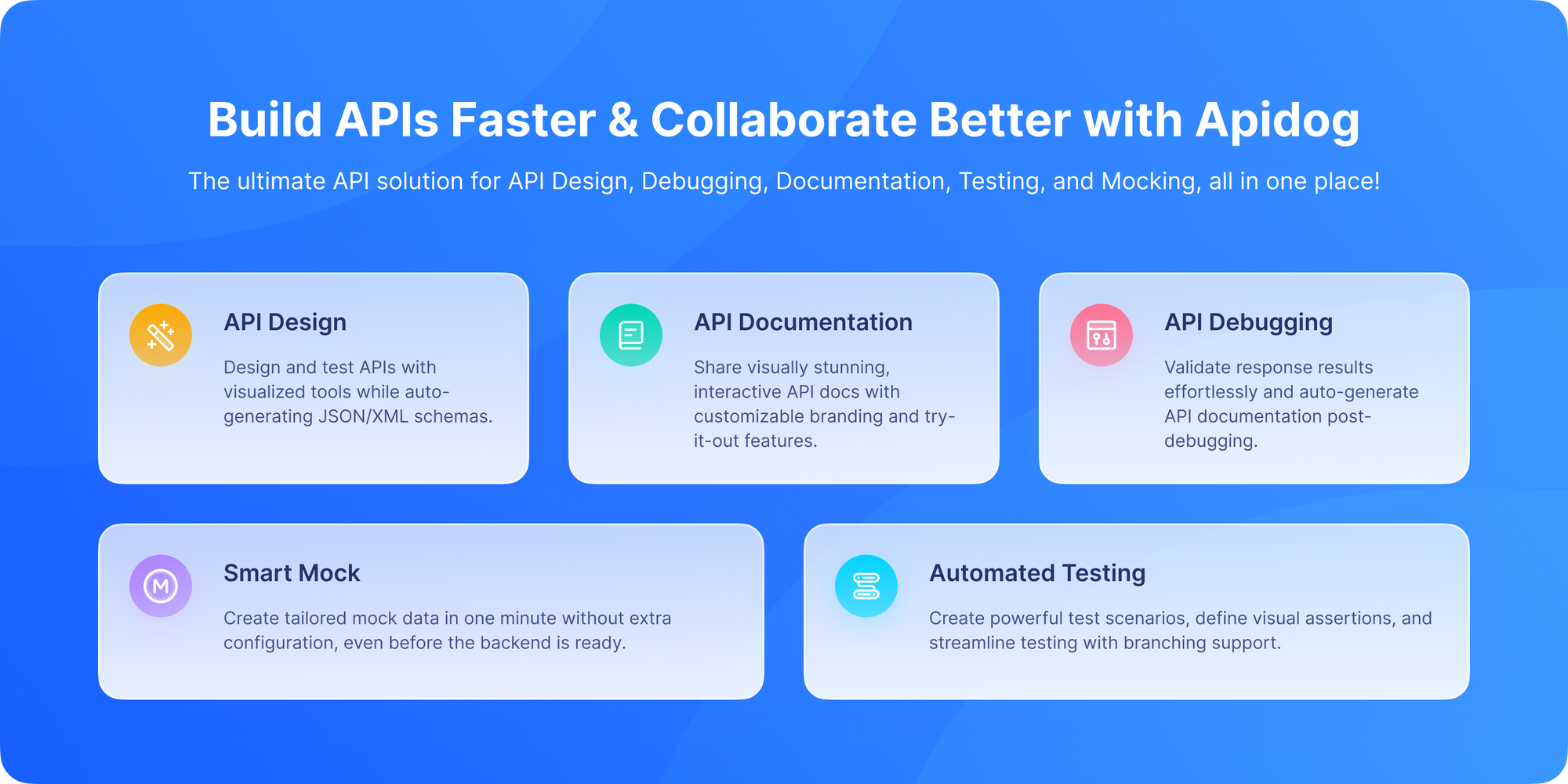
Apidog champions an integrated lifecycle approach. The goal is to eliminate context-switching between different applications.
- Step 1: Design your API directly within Apidog (which generates an OpenAPI spec under the hood).
- Step 2: Use Apidog's built-in tools to mock the API based on the design, allowing frontend developers to start work immediately.
- Step 3: Use Apidog's powerful testing features to validate the API implementation against the design.
- Step 4: Share the beautifully rendered documentation with consumers, all from the same platform.
It integrates:
- API Design: with OpenAPI support.
- API Testing: automated and manual testing.
- Mock Servers: simulate APIs during development.
- Collaboration: real-time teamwork across developers, QA, and product managers.
- Version Control: for managing API changes.
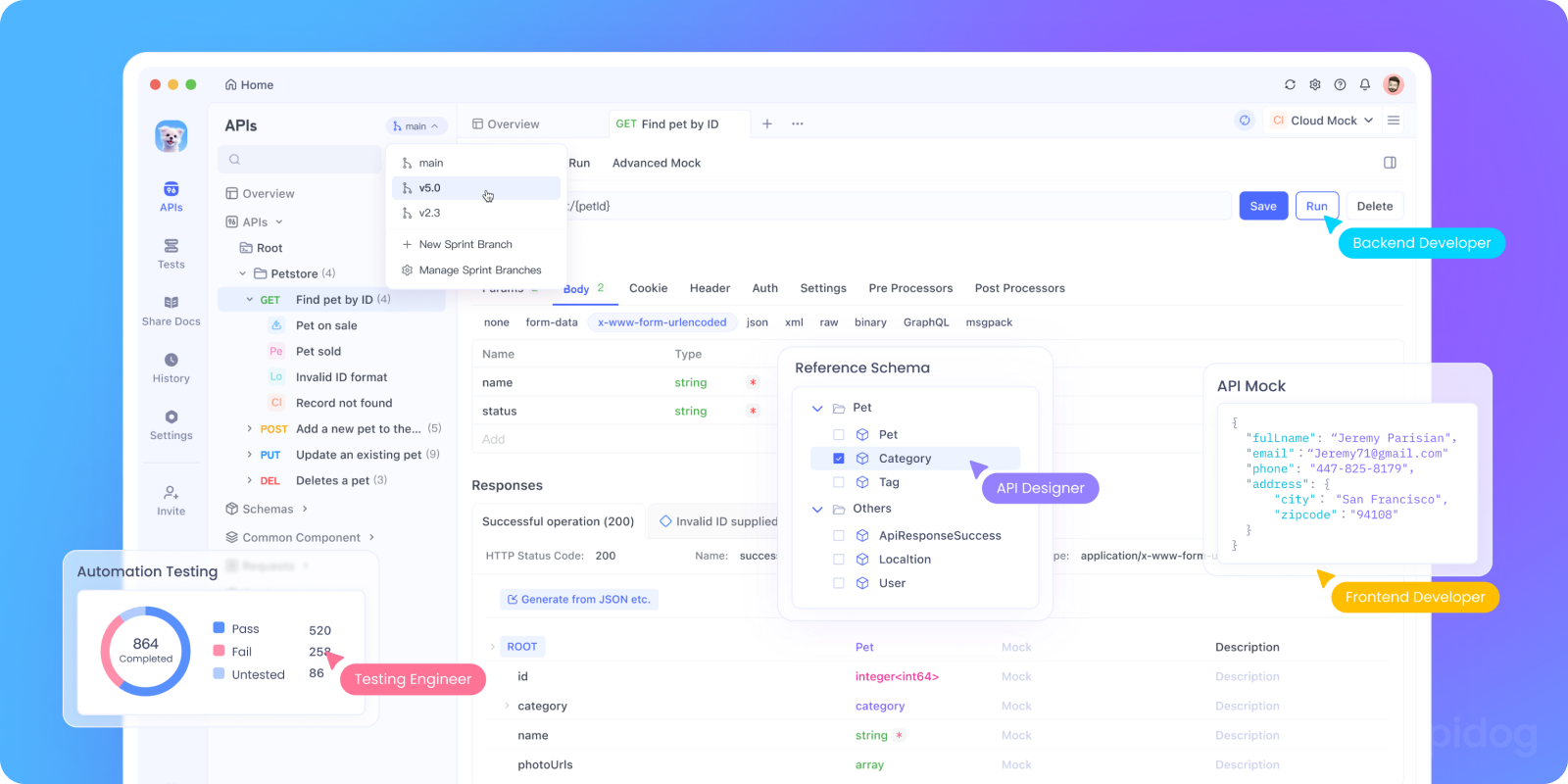
Apidog's philosophy is that design, development, testing, and documentation are not separate phases but interconnected parts of a continuous process. In other words, Apidog isn't just a documentation tool. It's a full lifecycle API management solution, bridging the gap between developers, testers, and stakeholders.
Feature-by-Feature Comparison
Let's break down how they stack up in key areas.
1. API Design & Specification
- Swagger: The undisputed king of specification authoring. The Swagger Editor is a dedicated environment for writing clean, valid OpenAPI YAML/JSON. It offers superb syntax highlighting, auto-completion, and validation against the OpenAPI schema. It's the text editor for API blueprints.
- Apidog: Offers a more intuitive, GUI-based designer. You can design your API by clicking and filling out forms, and Apidog will automatically generate the OpenAPI spec for you. This is far more approachable for those who find YAML daunting. You can also import and export OpenAPI specs, ensuring you never lose compatibility.
Verdict: Swagger wins for pure spec authoring power. Apidog wins for usability and approachability.
2. API Documentation
- Swagger: Swagger UI is the industry standard for API documentation. It generates a clean, interactive HTML page from an OpenAPI spec. It allows users to visualize and execute API calls directly from the browser. It's highly customizable and widely recognized by developers.
- Apidog: Also generates excellent, interactive documentation that is functionally very similar to Swagger UI. The key advantage is that it's automatically synchronized with your design and tests within the same platform. There's no need to manually regenerate and redeploy your docs; they're always live and up-to-date.
Verdict: It's a tie. Both produce top-tier documentation. Swagger UI has broader recognition, but Apidog's docs are more seamlessly integrated.
3. API Testing
This is where the divergence becomes most apparent.
- Swagger: Swagger UI allows for basic testing—you can "Try it out" and make live API calls from the documentation page. This is great for sanity checks but is not a dedicated testing tool. It lacks features like automated test suites, environments, variables, pre-request scripts, and advanced assertions.
- Apidog: Has a full-fledged, powerful testing module that rivals dedicated tools like Postman. You can:
- Create complex request sequences and workflows.
- Write JavaScript-based pre-request and test scripts.
- Manage environments and variables (e.g.,
{{base_url}},{{auth_token}}). - Build automated test suites and run them in CI/CD pipelines.
- Validate responses against your API schema automatically.
Verdict: Apidog wins overwhelmingly. Testing is a core feature of Apidog, while it's merely a convenience feature in Swagger UI.
4. Mock Servers
- Swagger: Creating a mock server requires additional tools, like Swagger Codegen to generate a server stub that you then have to run yourself, or a third-party service. It's not a built-in, on-demand feature.
- Apidog: Has a built-in, instantaneous mock server. The moment you define an endpoint and its response, Apidog generates a mock URL. Front-end developers can use this URL to start building their UI immediately, even before a single line of backend code is written. The mocks can use dynamic rules and examples.
Verdict: Apidog wins. Integrated mocking is a game-changer for parallel development.
5. Collaboration & Teamwork
- Swagger: The OpenAPI spec file is a collaborative artifact. Teams typically manage it via Git, which is powerful but can lead to merge conflicts in YAML/JSON files. Reviewing changes requires reading diffs in the spec, which can be challenging.
- Apidog: Is built for team collaboration from the ground up. It offers features like:
- Shared Workspaces: A central place for the team to work on APIs.
- Role-Based Access Control: Manage who can view, edit, or manage APIs.
- Change History & Versioning: See who changed what and when.
- Commenting: Discuss APIs directly on the endpoints.
Verdict: Apidog wins. It provides a more modern, user-friendly, and controlled collaborative environment compared to managing raw spec files in Git.
Pricing and Cost Considerations
When evaluating modern API development platforms, two prominent tools often come into consideration: Apidog and Swagger (commonly referred to as "Swagger"). While both support API design, documentation, and collaboration, they differ significantly in pricing structure, feature accessibility, and overall value particularly for teams and enterprises.
Apidog: Generous Free Tier with Scalable Paid Plans
Apidog positions itself as an all-in-one API platform, blending the capabilities of design, testing, mocking, and documentation into a single intuitive interface. Its pricing model is notably team-friendly.
The Free Plan offers unlimited projects, APIs, and team members, making it exceptionally practical for individuals, startups, and even growing development teams. Users benefit from core features such as API design, automated documentation, basic mocking, and testing capabilities, all without restrictive paywalls.
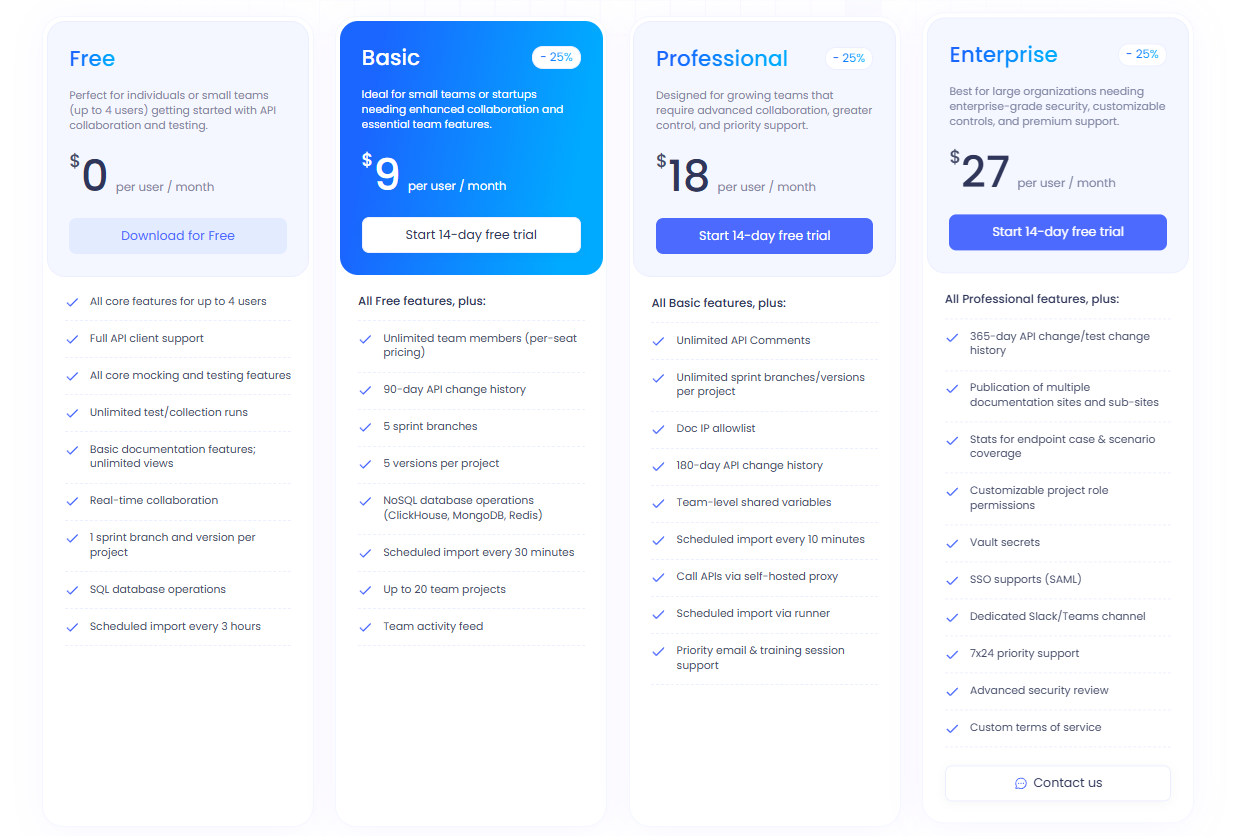
Swagger: OpenAPI-Centric with Restrictive Free Access
Swagger, developed by SmartBear, remains the industry standard for teams deeply embedded in the OpenAPI Specification ecosystem. However, its pricing structure leans toward monetizing core functionality earlier in the user journey.
The Free Plan allows only one private API design, with unlimited public APIs. While useful for open-source contributors or individual learners, this restriction renders it impractical for professional development teams requiring privacy and collaboration.
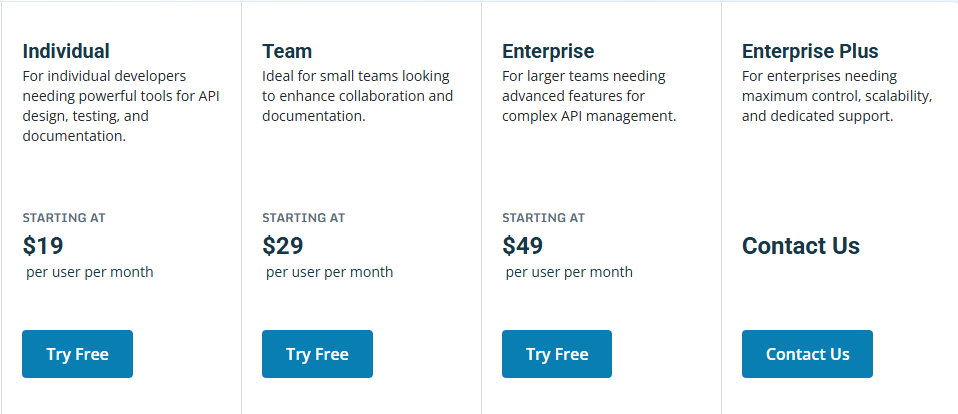
Where Apidog shines with unlimited private APIs and team collaboration, even at no cost, Swagger restricts those essentials behind a paywall. Apidog includes built-in testing and mocking, while Swagger expects users to integrate external tools. Though Swagger offers more mature DevOps integrations, Apidog counters with a modern interface and a lower learning curve.
Pricing-wise, both platforms offer comparable per-user rates in their mid-tier plans, roughly fifteen to twenty-five dollars per user monthly. However, Apidog delivers significantly more value upfront, especially for budget-conscious or rapidly scaling teams.
The Decision Matrix: Which One Should You Choose?
The best choice isn't about which tool is "better," but which is better for your specific needs.
Choose Swagger (The OpenAPI Ecosystem) if:
- You are a purist who loves code-first specifications and are comfortable writing and maintaining YAML/JSON.
- Your primary goal is to create best-in-class, static API documentation.
- You need to generate server stubs or client SDKs automatically for many languages.
- Your workflow is already heavily integrated with Git-based version control for your API contracts.
- You prefer a "best-of-breed" toolchain and don't mind using separate tools for testing (e.g., Postman) and mocking.
Choose Apidog (The All-in-One Platform) if:
- You want a single, unified tool for the entire API lifecycle without context-switching.
- Powerful API testing is a non-negotiable requirement for you and your team.
- You value integrated mock servers to enable parallel development between frontend and backend teams.
- You need built-in collaboration features like access control, commenting, and change tracking.
- You find writing raw OpenAPI specs tedious and prefer a visual, GUI-based designer.
Can You Use Them Together? Absolutely!
This isn't necessarily an either-or decision. The beauty of the OpenAPI Specification is that it acts as a universal interchange format.
A very powerful workflow is:
- Use Swagger Editor for initial, complex spec authoring if your team prefers it.
- Import the OpenAPI spec into Apidog.
- Use Apidog for everything else: testing, mocking, collaboration, and sharing documentation.
This gives you the authoring power of Swagger with the lifecycle management of Apidog.
How to Get Started
If you're curious to try it out:
- Start with Swagger if you want to explore OpenAPI basics.
- But if you want to experience a modern, integrated API workflow, go download Apidog for free.
Once you see how Apidog handles design, testing, and documentation in one place, you’ll quickly realize why so many developers are making the switch.
Conclusion: The Evolution of API Tools
If you just need API documentation, Swagger is still a fantastic choice. Swagger (and the OpenAPI Specification) revolutionized API development by introducing a standard, design-first approach. It laid the foundation for everything that came after. For that, it will always be a cornerstone of the API world.
If you want a complete lifecycle tool from design to testing to collaboration, Apidog is the clear winner. Apidog represents the next evolution: integration. It recognizes that modern API development isn't just about design and docs; it's a continuous, collaborative process that involves testing, mocking, and deployment. It builds upon the OpenAPI standard and bundles the entire workflow into one cohesive, powerful platform.
For teams and developers looking to streamline their processes, reduce tool sprawl, and boost productivity, Apidog offers a compelling and modern solution. It takes the contract-first philosophy championed by Swagger and empowers you to uphold that contract through every stage of development.
